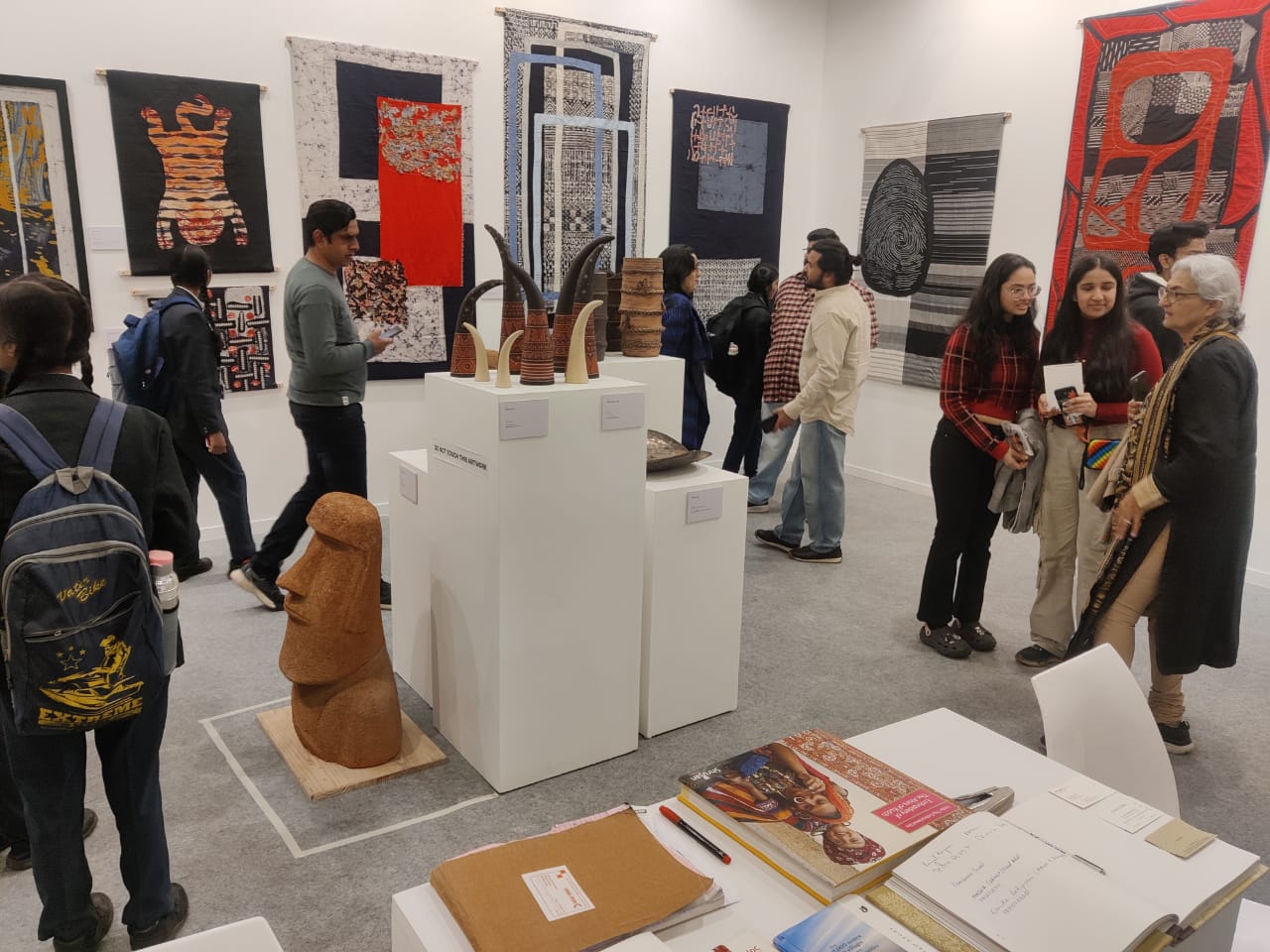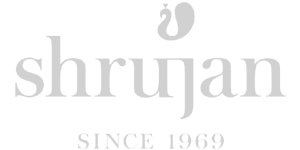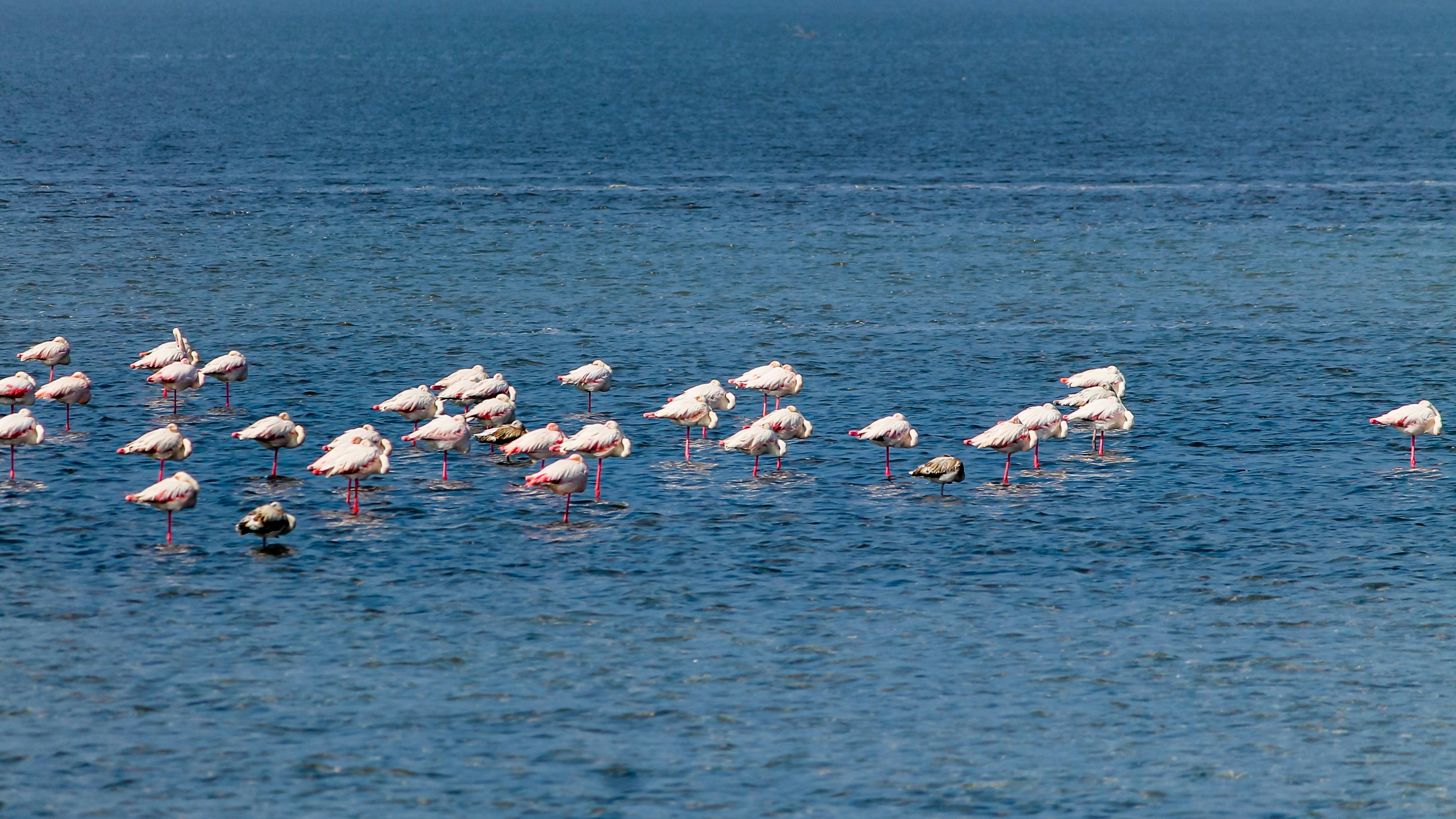OUR JOURNEY
-
1968 to 1971
-
1972 to 1979
-
1980 to 1983
-
1984 to 1988
-
1990 to 1996
-
1997 to 2000
-
26 January 2001
-
2002 to 2006
-
2007 to 2011
-
2012 to 2015
-
2016 to 2017
-
2018 to 2019
-
2020 to 2021
-
2022 to 2023
-
2024
Chanda Shroff volunteers at the drought-relief kitchen in Dhaneti village of Kutch. Even though the situation is grim, the women are unwilling to accept charity. She is awestruck by the exquisite hand embroidery on their clothing and asks the women of Dhaneti village to embroider their traditional motifs on 30 saris.
The saris are sold at an exhibition in Mumbai and the money sent right away to the 30 craftswomen who belong to the Ahir and Meghwaad Gurjar communities.
Chanda Shroff thus intuits a way to make a rural craft transcend local boundaries and appeal to urban customers.
This is the beginning of Shrujan, the first-ever social enterprise in India to work with embroidery craftswomen for livelihood and empowerment.
Niece-in-law Ranjan Shroff and master craftswoman Parmaben Dana from Dhaneti are among Chanda Shroff’s first companions in this pioneering enterprise.
Embroidery becomes an economic lifeline for 70 women of Dhaneti and the neighboring villages.
In 1971, when India is at war with Pakistan, and parts of Kutch are still ravaged by drought, Chanda Shroff and Ranjan Shroff set off for the remote area of Banni which is close to the India-Pakistan border. They are in search of an exquisite embroidery style. They meet the craftswomen of the Mutva community and offer them the opportunity to earn a much-needed income from their embroidery.
Gulbaigbhai Morana, Narsangbhai Lakhiyaji Marwada, Fuflibai Mutva and Jijabai Mutva play a key role in ensuring that Mutva women as well as those from the Haalepotra, Meghwaad Maarwada, Sama, Sameja and the Pathan communities use their embroidery skills to earn a livelihood. Embroidery thus becomes an economic lifeline for the entire area of Banni in the years of the drought.
1968 to 1971
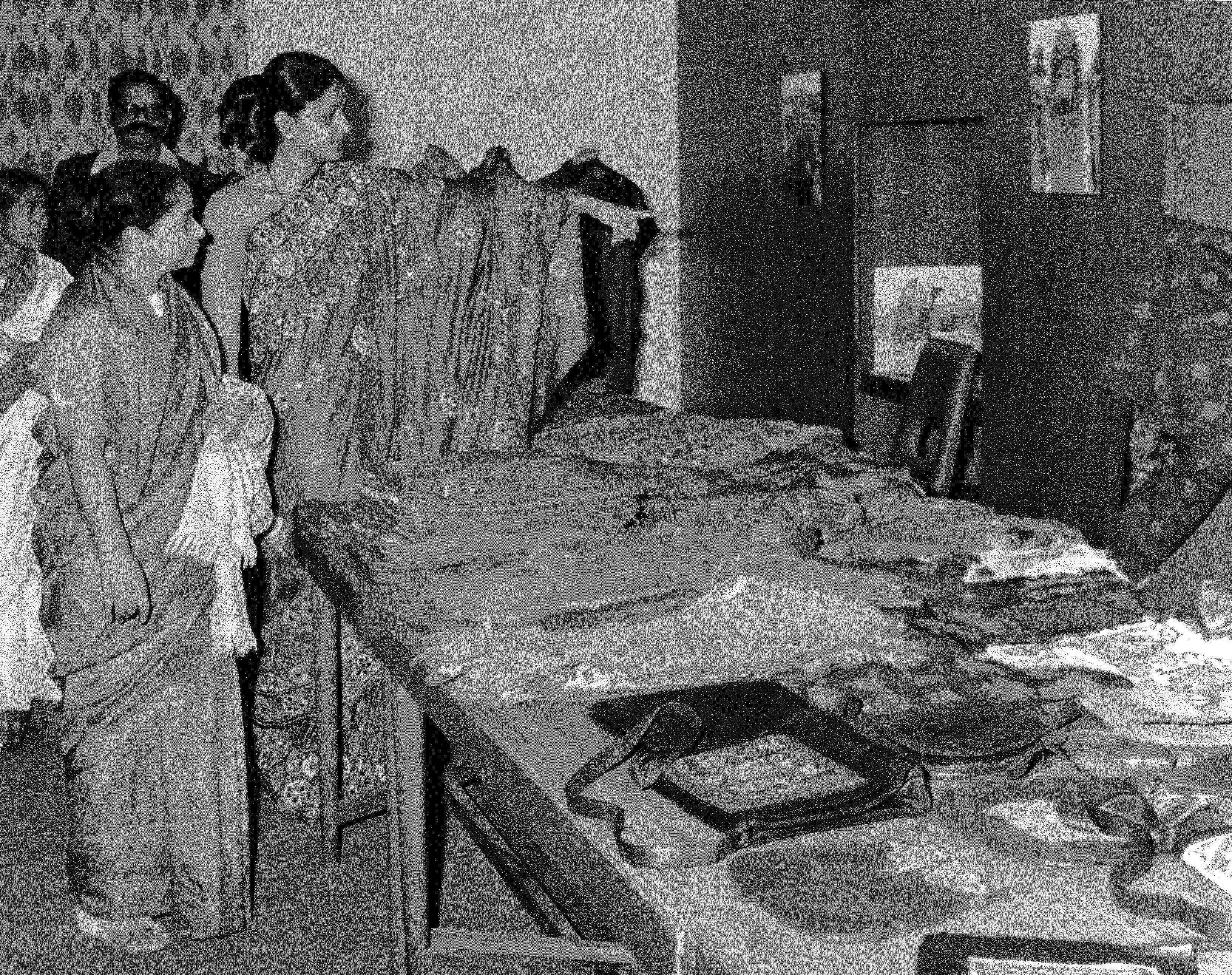
An entity called Shrujan Arts and Crafts is created. Shrujan develops various products for urban customers and markets them through exhibitions in different cities of India.
Chanda Shroff makes her way into the Refugee Camp in Jura which was set up after the India-Pakistan war. She wants to be of use to the women who are confined to the Camp.
Sonuben and Sujadada Bhanani who are also Jura Camp refugees inform her of the desperate conditions. They take the lead in coordinating Shrujan’s efforts to provide embroidery work to almost every household in the Camp. Sonuben teaches Soof, the counted thread embroidery style that belongs to the Meghwaad Maaru and Sodha communities to the women of the Camp.
By 1975, 300 women in 14 villages of Kutch have joined the Shrujan family.
Work intensifies with the Meghwaad Marwaada and the Haalepotra communities of Banni. Their traditional embroidery styles known as Khudi-Tebha and Kambira are showcased on Shrujan’s range of bed covers. Chanda Shroff begins her association with craftspeople of other textile crafts of Kutch including the hand block printers of Khavda.
Shrujan craftswomen practising Soof embroidery shift to Sumrasar where some of the Jura Camp refugees have been permanently settled by the Government of India.
1972 to 1979
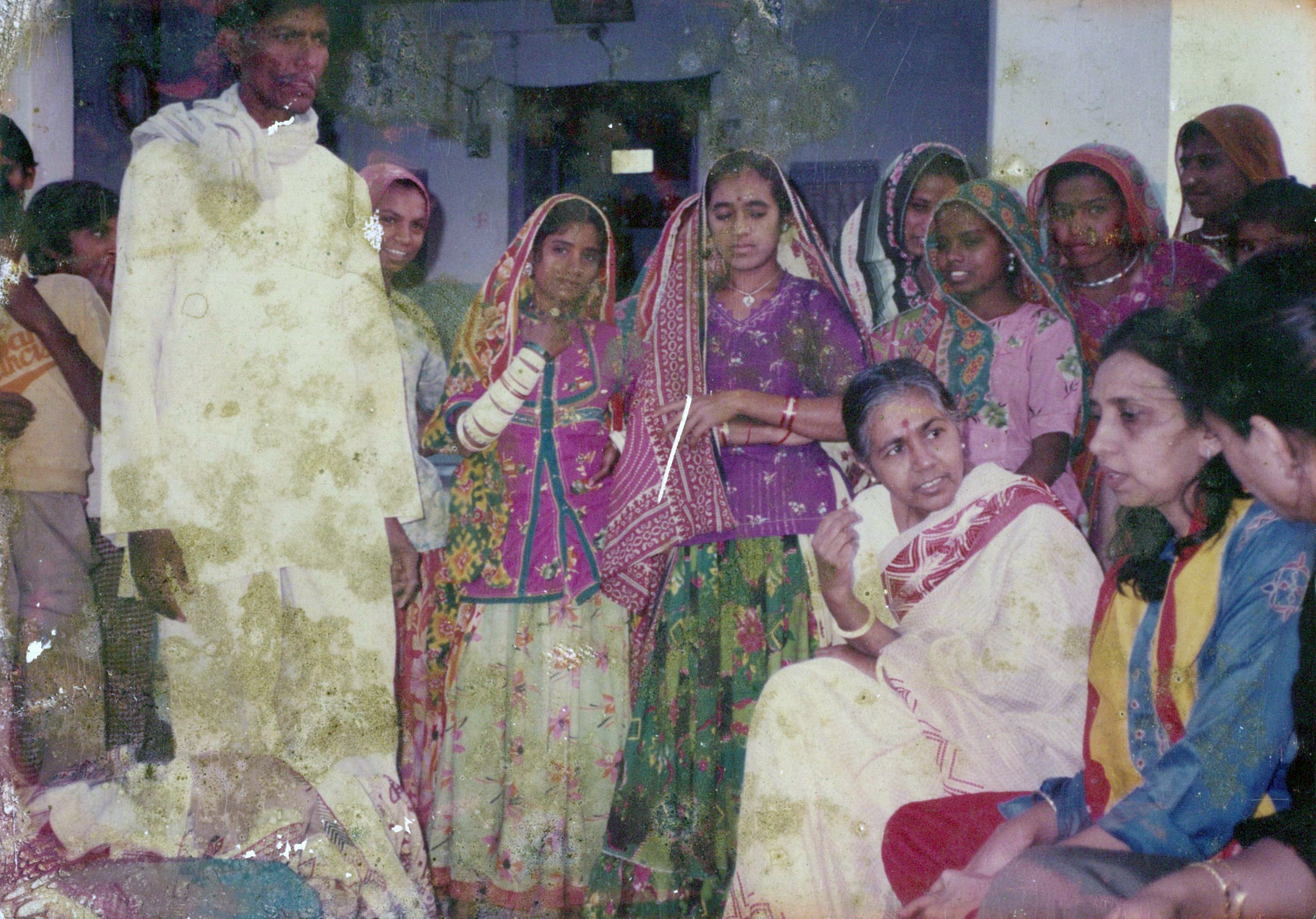
Shrujan introduces stencils to replace the method of hand drawing the designs on the base fabric. This innovation allows Shrujan to provide work to 700 women in 32 villages.
Shrujan conducts training classes to enhance the quality of the embroidery. More products including small patches are introduced in the Shrujan collection.
1982. Shrujan’s first international exhibition takes place in London.
Chanda Shroff buys a farm in Sumrasar to establish a full-time base for Shrujan in Kutch.
Chanda Shroff reaches out to more crafts. Her interactions -- with the hand block printers of Dhamadka; bandhani artisans of Tera; lacquer wood artisans of Jura, and weavers of Bhujodi -- help enhance the technical and creative aspects of these crafts and lead to increase in sales.
Craftswomen belonging to the Sodha and Jadeja communities who reside in Loriya village and practise Pakko embroidery join the Shrujan family.
The Shrujan network spreads to the villages of Kuran, Bibbar and Chandanagar where craftswomen practise Pakko embroidery.
Soof embroidery spreads to the Tharad area of Banaskantha in Gujarat.In Tharad, Chanda Shroff also begins work with the craftswomen of the Mochi community who practise Aari embroidery.
1983. Shrujan Arts and Crafts becomes a Trust – The Shrujan Trust.
1980 to 1983
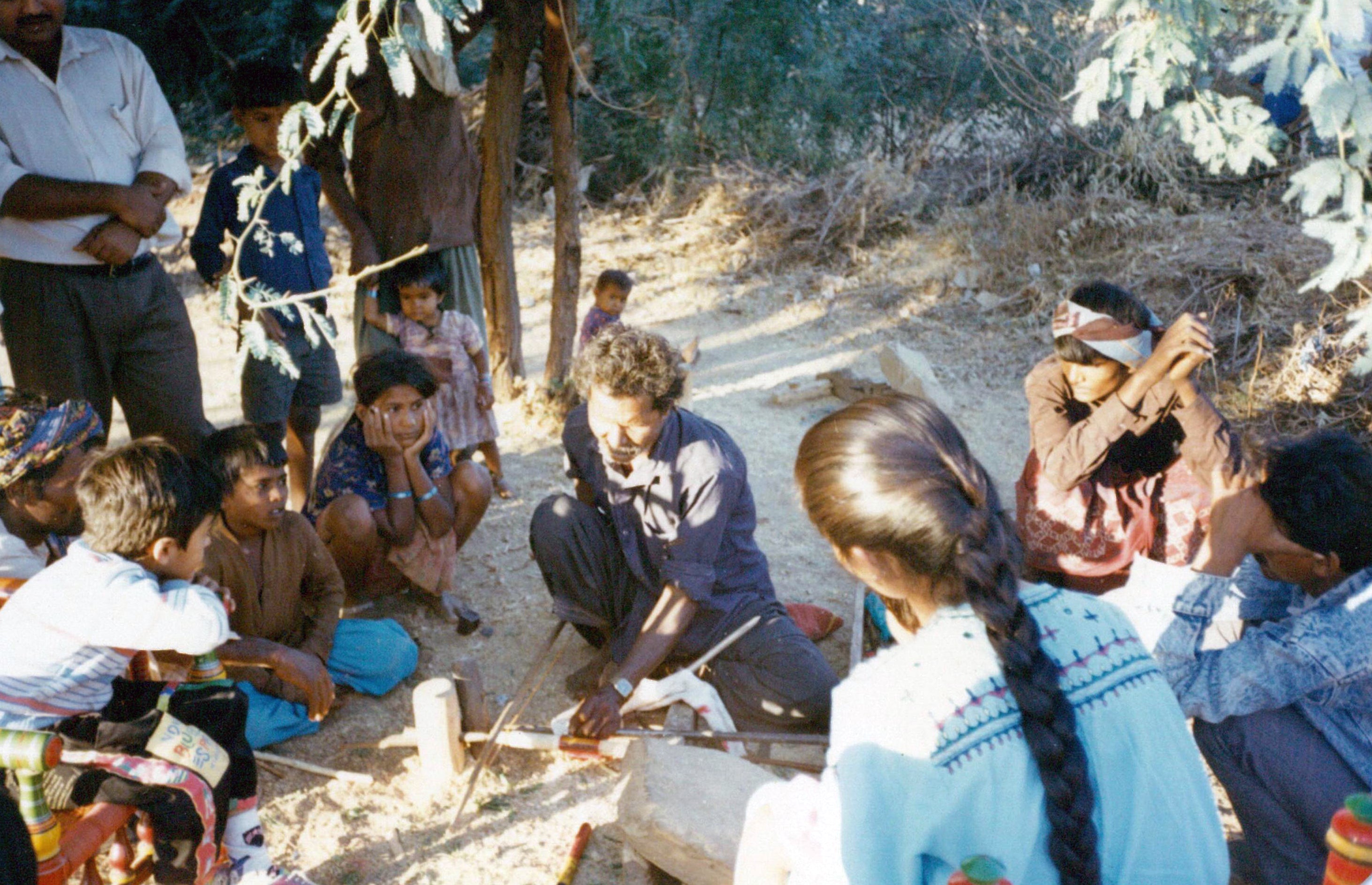
Kutch is once again ravaged by a severe drought. Shrujan undertakes several relief activities including running a cattle camp, distributing food kits and rebuilding houses for the Kodi and Vaadha communities in Nirona.
Shrujan starts work with the Jat Garaasiya community in Sumrasar Jatvand.
1984 to 1988
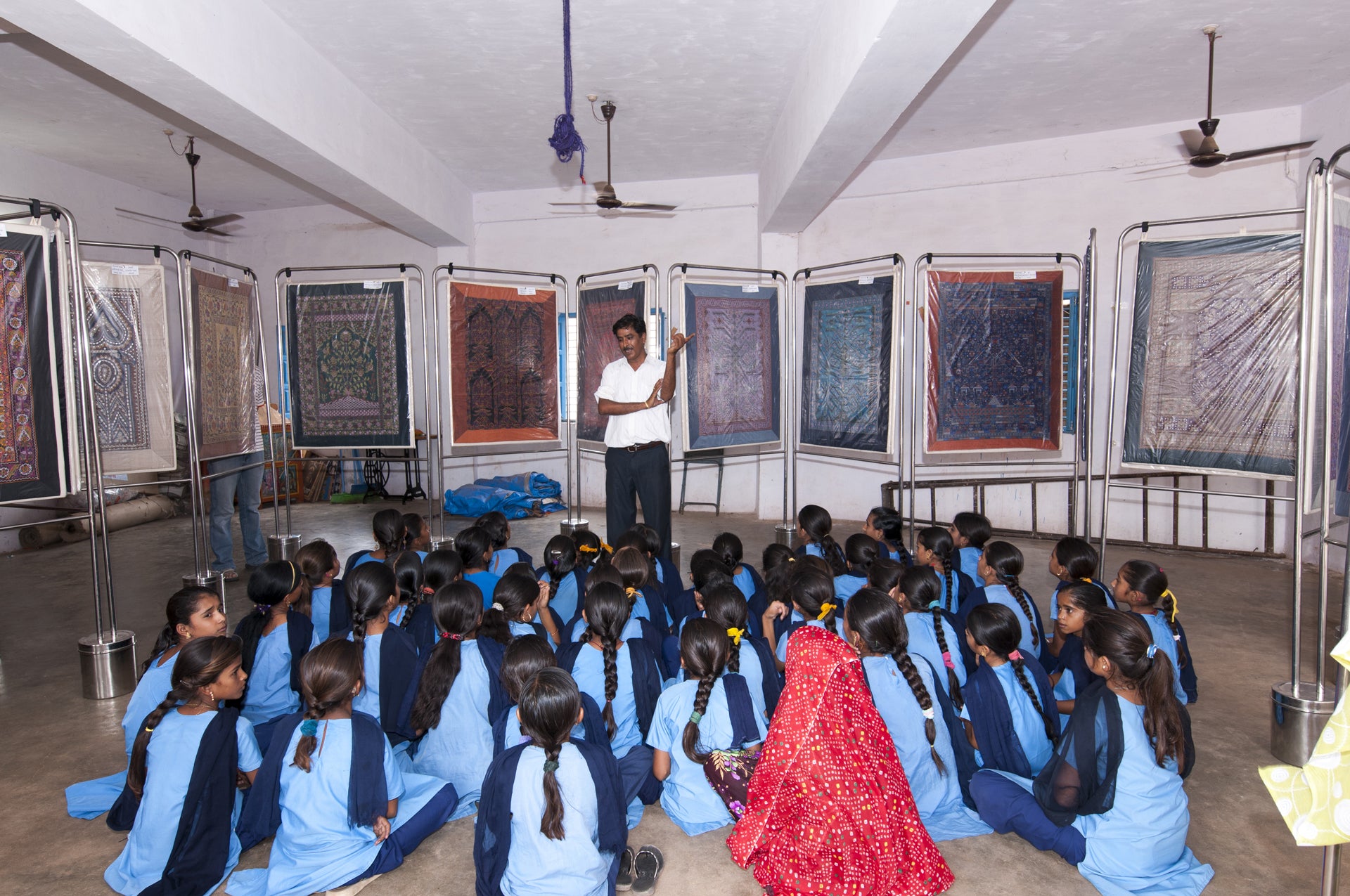
Shrujan’s Parmaben Dana goes to Abdasa to teach embroidery to women who do not have any embroidery tradition. About a hundred women learn and get proficient in Ahir embroidery.
Shrujan builds its own campus near Bhujodi village. The campus houses several departments including materials purchase; design and printing; colour matching and kit making; production control; sales and marketing; and tailoring.
A weaving loom is installed at the Shrujan campus to create new designs.
Shrujan reaches out to 250 women of the Sodha and Jadeja communities who reside in the remote area of Lakhpat.
The Shrujan family is 1800 women-strong and has a presence in over 75 hamlets and villages.
Chanda Shroff takes up permanent residence in Kutch.
Shrujan exhibits in Nairobi, Kenya.
1990 to 1996
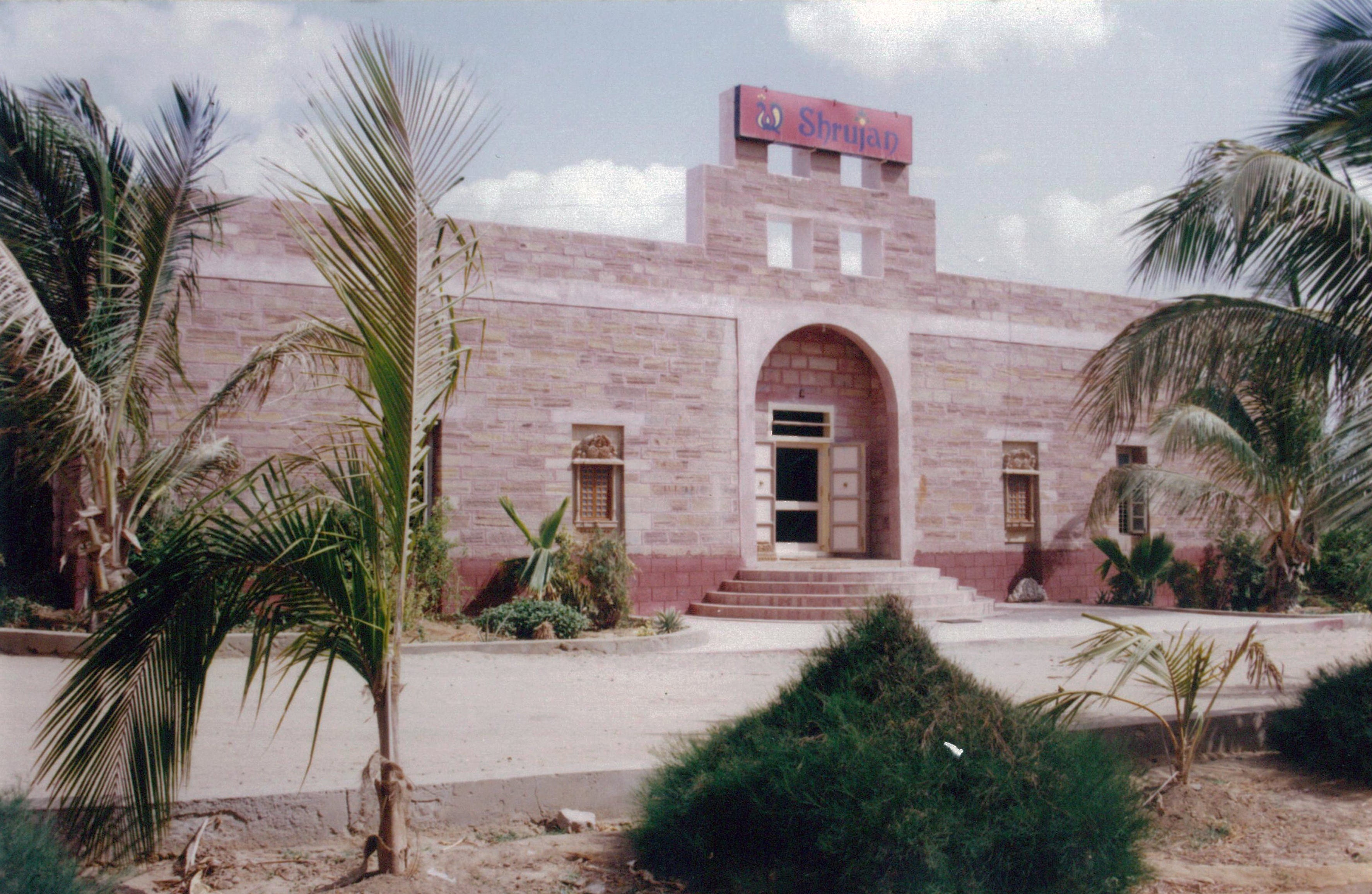
2200 Shrujan women residing in over 85 hamlets and villages have transformed their lives. They invest in education and health care for their children; and have resources to buy cattle. They enjoy financial security and are confident that they can look after themselves and their families.
Shrujan initiates an ambitious project called Design Centre on Wheels (DCOW) to motivate craftswomen to enhance their creativity and skills. DCOW also aims to inspire the younger generation to learn and practice embroidery.
Craftswomen from the Dhebariya Rabaari community who reside in Lodai village as well as those from the Raau Node community who live in Lakhara village become part of the Shrujan family.
1997 to 2000
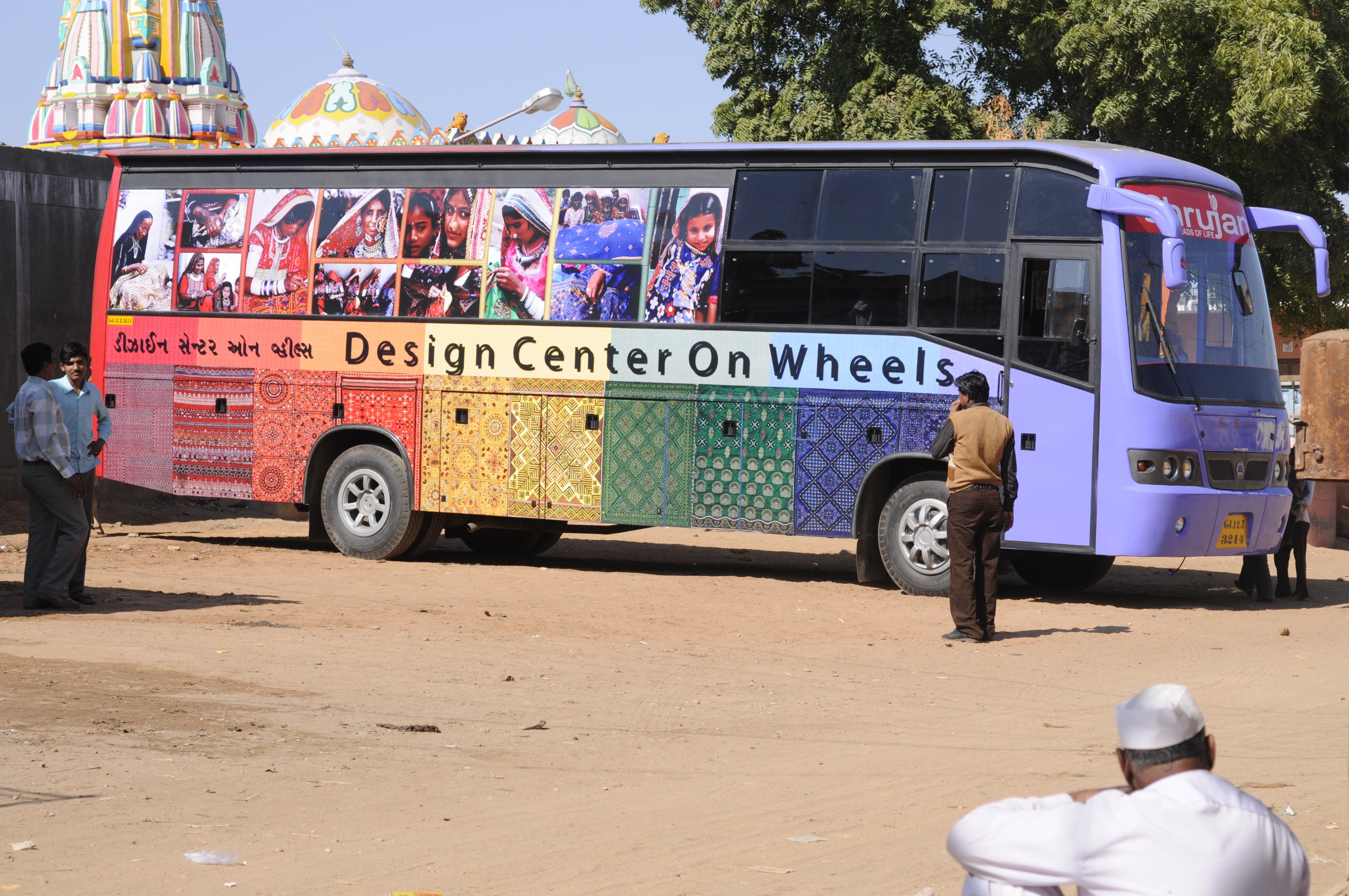
Kutch is devastated by an earthquake. The Shrujan campus in Bhujodi instantly becomes a base for relief activities that continue for two years. Volunteers and voluntary organizations flock to the Shrujan campus to lend their support.
The Shrujan campus is in shambles. Even so, Chanda Shroff manages to immediately provide embroidery work to Shrujan craftswomen and to others as well. She knows that her craftswomen will want to embroider to earn an income rather than accept charity.
The Shrujan family expands to 4500 women. Over the next three years, production exceeds sales to such an extent that it takes more than 15 years to completely liquidate the inventory created in the aftermath of the earthquake.
2001. UNESCO honours two Shrujan master craftswomen, Rajiben Naranbhai Shamaliya and Jassiben Rupabhai Meriya with the Award of Excellence for Handicrafts.
26 January 2001
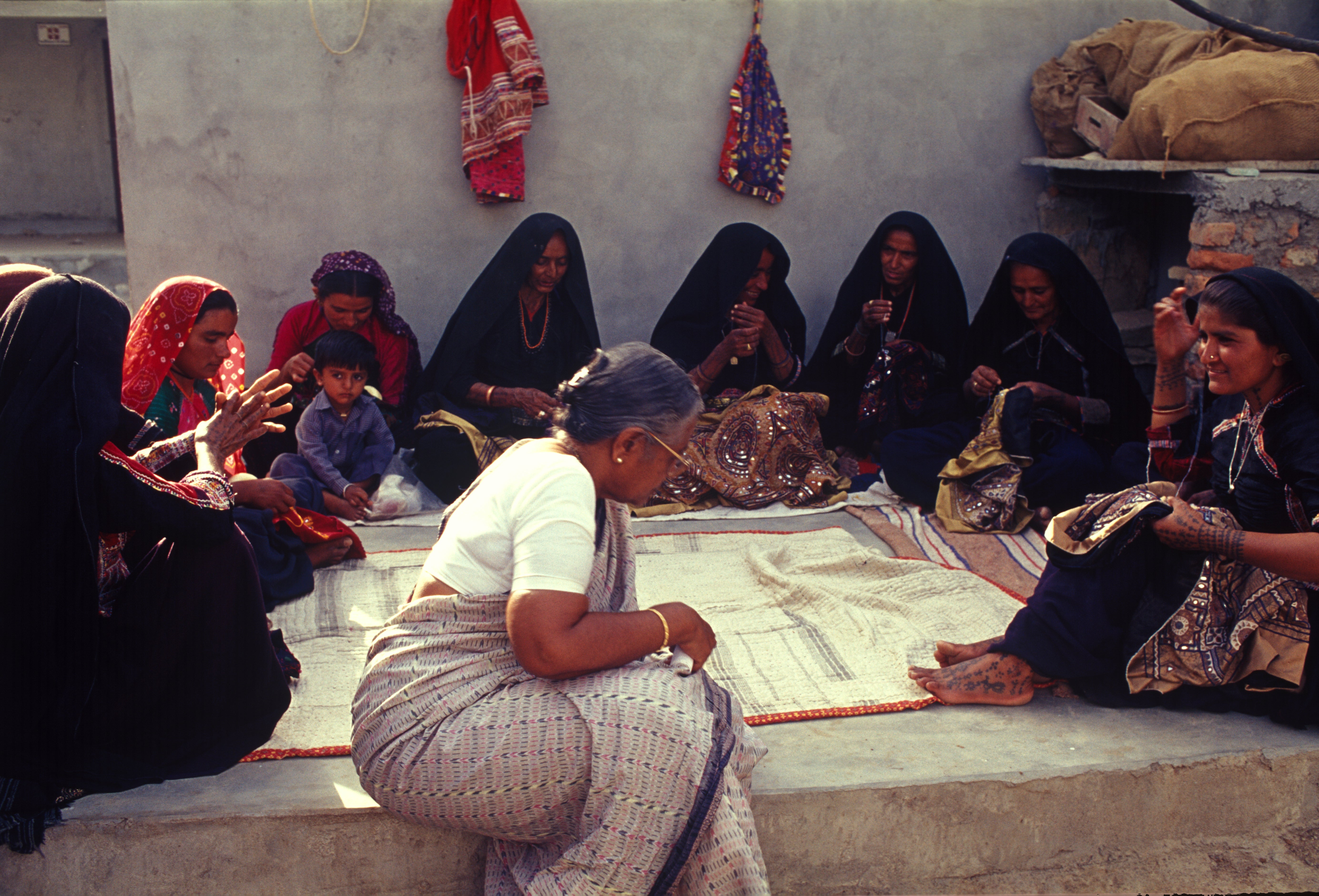
Shrujan is invited to participate in the UNESCO International Craft Exhibition at San Juan Capistrano, USA.
Shrujan opens its first shop in Mumbai. The Design Centre on Wheels project is completed. It is a monumental project in which 1130 textile panels are embroidered by 550 craftswomen from 12 different communities. A specially designed us takes 30-40 original panels at a time to the villages of Kutch.
2003. The Shrujan campus is rebuilt. A rainwater harvesting system is installed to take care of the annual requirement for drinking water.
Shrujan builds workstations in 14 villages where craftswomen congregate at a designated time each day to work on their embroidery.
2004. Shrujan is invited to participate in the first International Folk Art Market at Santa Fe, USA.
Shrujan launches Pride and Enterprise. This multi-dimensional project will create the first-ever, comprehensive documentation of all the embroidery communities as well as the embroidery styles practised by them. The documentation will be in the form of print, still photography, audio recordings and video films. The project will also include building a collection of heritage embroidered textiles.
2006. Chanda Shroff is honoured with the Rolex Award for Enterprise for her pioneering work in safeguarding and revitalizing the embroidery heritage of Kutch. She becomes the first Indian Laureate to be awarded this prestigious award.
2002 to 2006
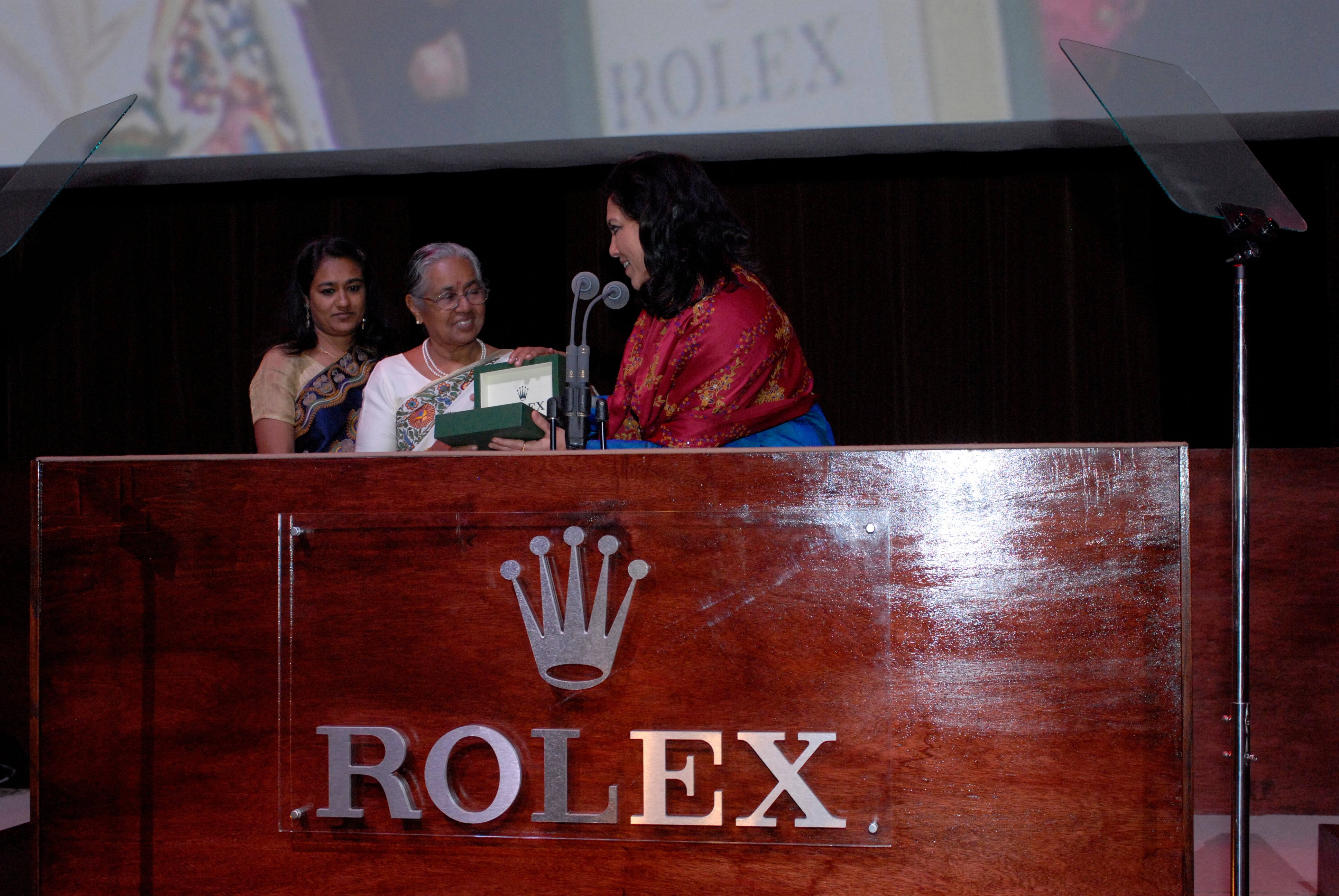
The Design Centre on Wheels project completes 83 visits; these visits cover 163 villages of Kutch and Gujarat and reach 22,000 visitors. Some cities are also covered.
Shrujan’s Pride and Enterprise project completes participatory field research with the Ahir and Meghwaad Gurjar communities of Kutch.
2008. Participatory field research begins with the Mutva community of Banni.
2009. Shrujan produces and publishes a Craft Heritage Book and a Self-Learning Film both titled Under the Embroidered Sky: The Embroidery of the Ahirs of Kutch.
Shrujan begins construction of a campus on its land near Ajrakhpur. This campus will be the site for its most ambitious project: the Living and Learning Design Centre, a crafts education and resource centre dedicated to safeguarding and promoting all the crafts of Kutch.
Participatory field research begins with the Raau Node, Sodha-Jadeja and Meghwaad Maaru communities.
2010. A separate entity called Shrujan Creations is carved out of the Shrujan Trust. This entity takes over Shrujan activities such as providing work to the craftswomen in the villages, designing, fashioning and marketing high quality apparel, accessories and lifestyle products.
A terracotta pottery studio is set up at the Shrujan Bhujodi campus and pottery gets included in the products marketed by Shrujan Creations.
2007 to 2011
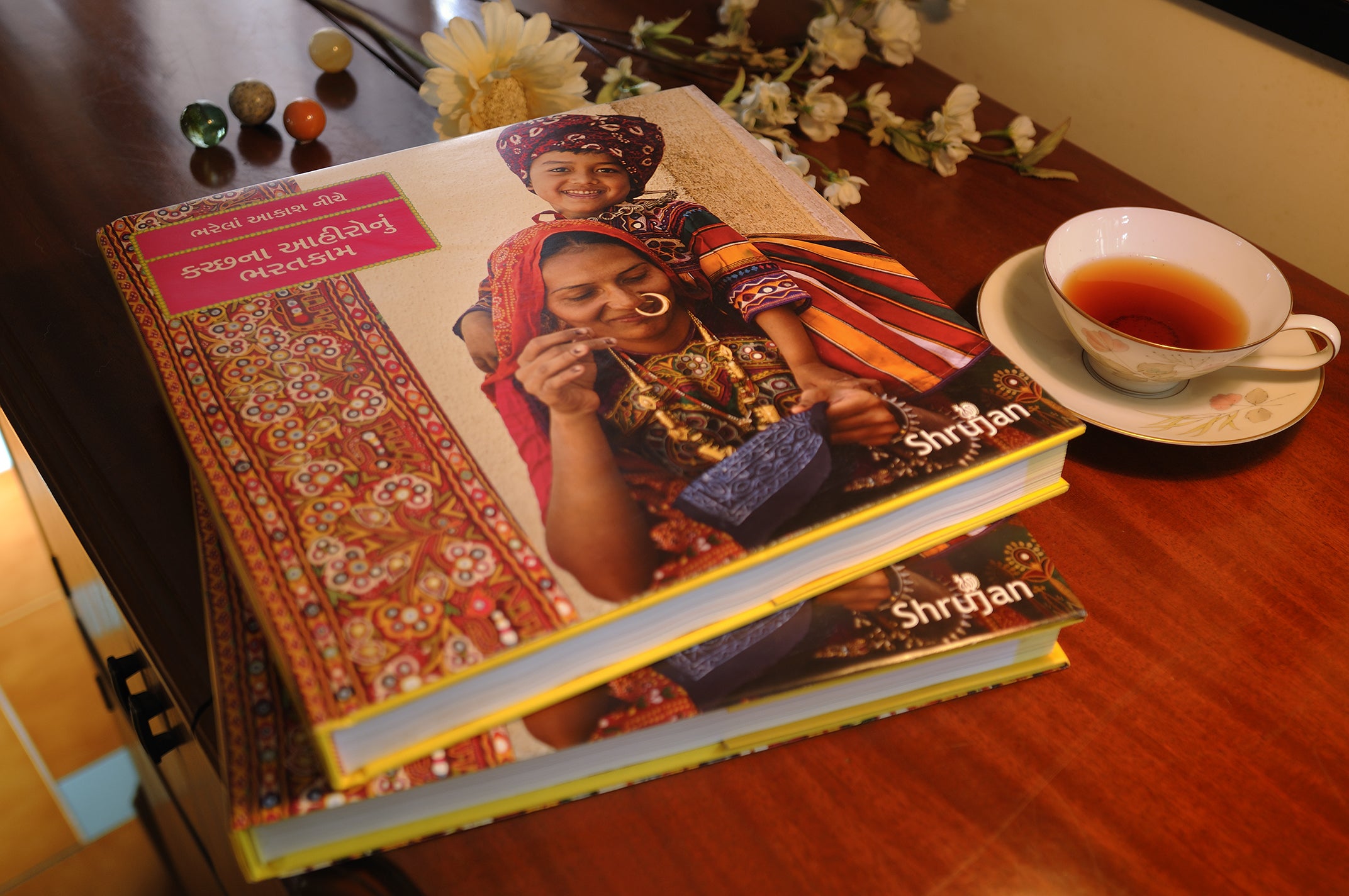
Construction of buildings is completed in the Living and Learning Design Centre campus. Work begins on the interiors of its Museum Galleries, Studios, administrative offices and library.
2014. The Pride and Enterprise project expands to document the natural, historical, cultural and crafts landscape of Kutch. Oral histories, primarily of craftspeople, including their songs and stories are also documented. Audio recordings, still photography and video films are the primary media for the documentation.
2012 to 2015
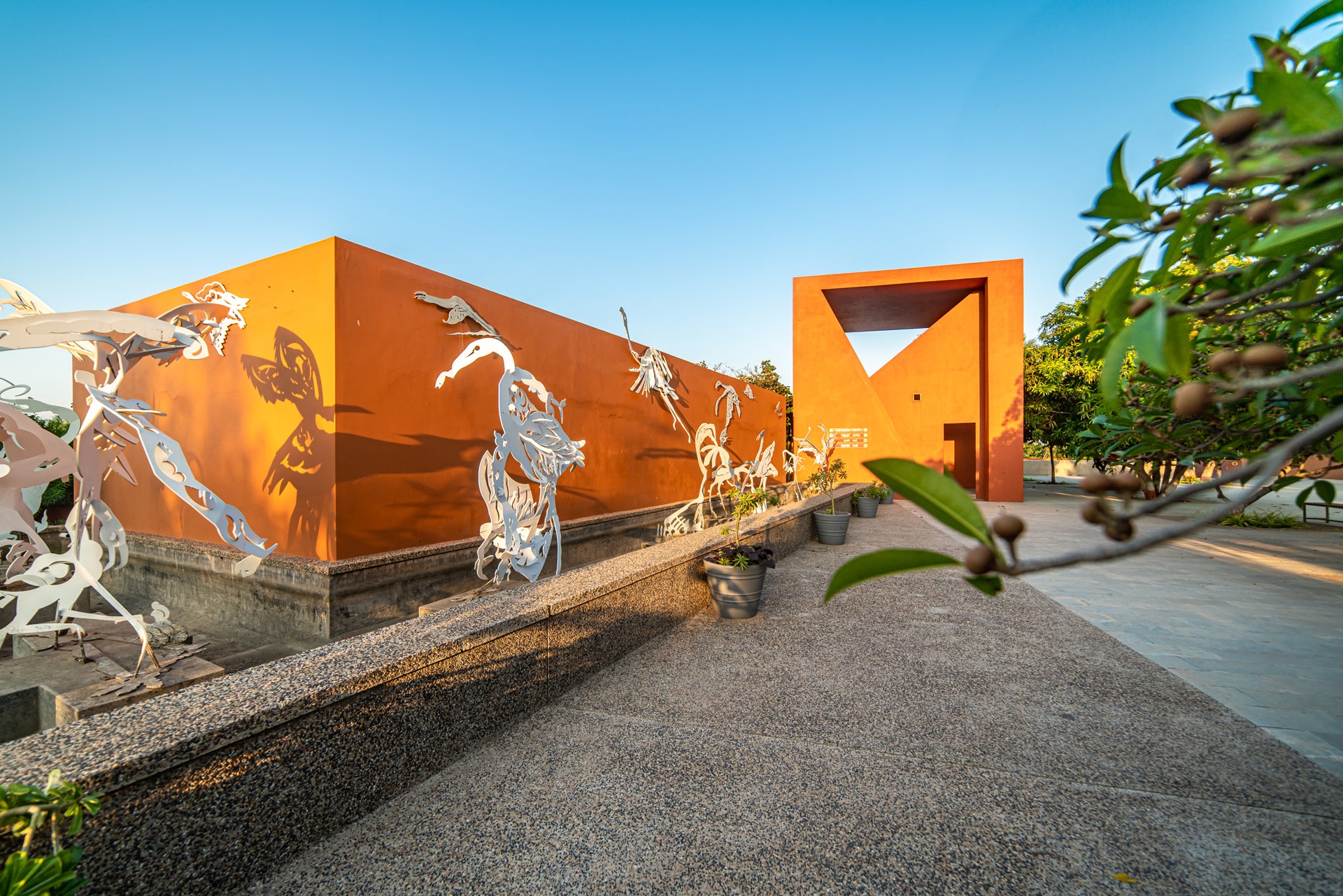
The inauguration of the Living and Learning Design Centre – LLDC -- is celebrated with a five-day festival in which 4,500 craftspeople and their families are the Chief Guests. 1800 other guests as well as staff members and their families are also part of the celebration.
LLDC’s first Museum Gallery is also inaugurated. Its first Show is entitled, The Living Embroideries of Kutch.
23 August 2016. Chanda Shroff passes away.
Shrujan inaugurates its shop in Ahmedabad.
Shrujan is invited to participate in Lakme Fashion Week, in the section on Sustainable Fashion.
The Mumbai Shrujan shop reopens at a new location.
27 February: Chanda Shroff’s birthday is celebrated by felicitating 257 craftswomen and honouring them with the Kaarigar Award.
Shrujan receives the International Crafts Award.
Parmaben Dana, Shrujan’s first family member passes away. Parmaben played a key role in Shrujan as artist, teacher and master craftswoman par excellence. She and Chanda Shroff were friends for a lifetime and beyond.
2016 to 2017
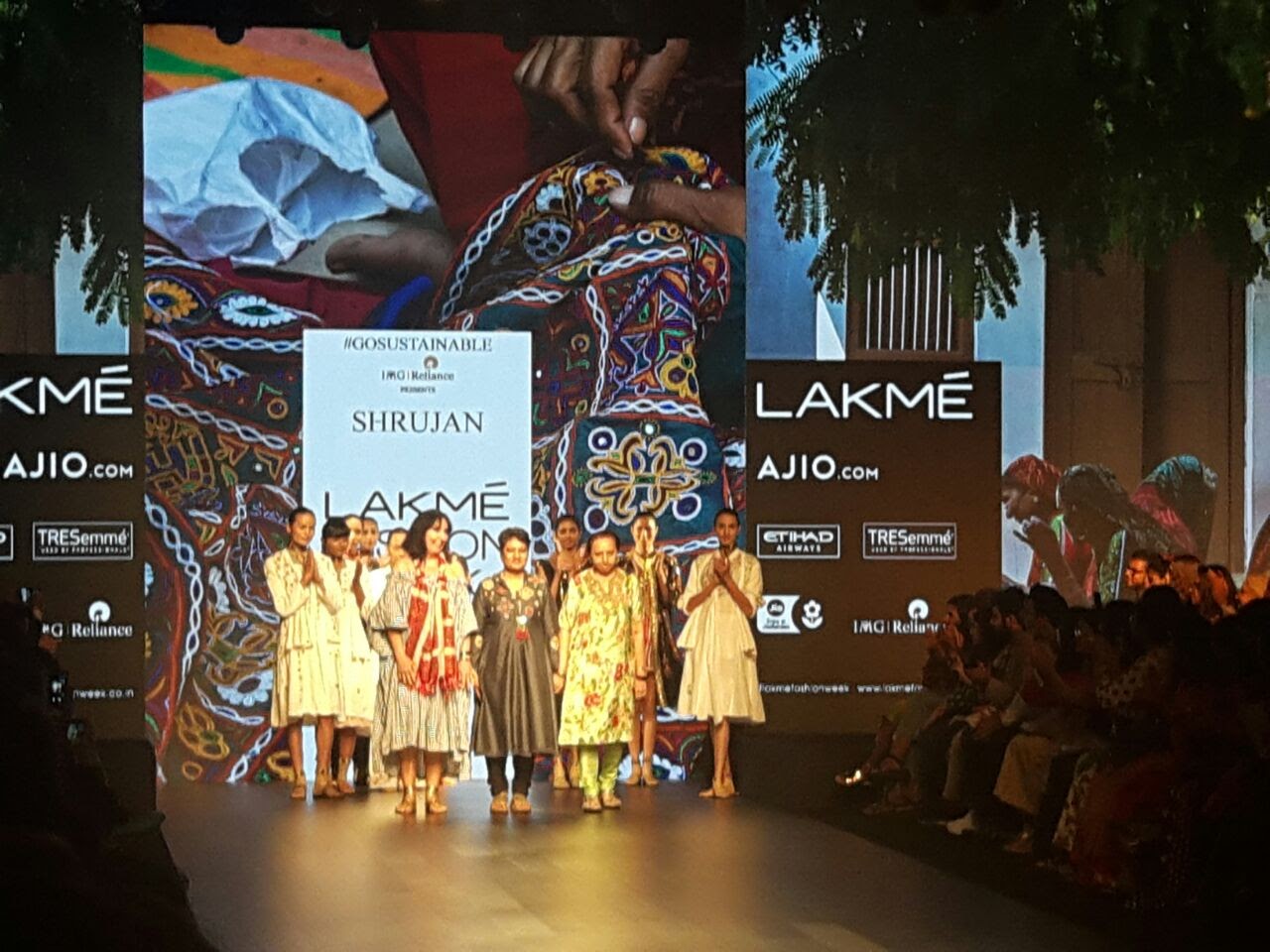
January 2018. LLDC organizes a four-day Folk Festival that showcases the crafts, performing arts and food culture of Kutch. 6,000 visitors attend the festival.
The Folk Festival is announced as an annual feature with the mandate to celebrate the crafts and culture of one state of India every year.
8 March 2018. The Government of India honours Shrujan with the 2017 Nari Shakti Award.
Shrujan and LLDC are invited to exhibit a Show on the embroideries and textile crafts of Kutch at Hankyu Department Store in Osaka, Japan.
The Shrujan shop opens at Bhuj airport.
Shrujan repertoire expands to include non-embroidered, handcrafted textiles of Kutch.
LLDC inaugurates another Gallery, the Inspiration Gallery. Its first Show is titled, Devotional
Textiles.
Shrujan is half-a-century old.
LLDC hosts its second Folk Festival titled Namaste which celebrates the crafts and culture of the eight states of the North-East of India.
LLDC’s Inspiration Gallery exhibits two
Shows, Aari and Zari.
Shrujan plays a key role in the formation of the Kutch Craft Collective. The Collective is a coalition of five crafts organizations: Kala Rakhsa, Khamir, Qasab, Shrujan Creations and Vivekanand Rural Development Institute. All these organizations share a common vision and have
played a key role in the revival and growth of the traditional crafts of Kutch. They have also created livelihood opportunities for thousands of craft families living in remote villages.
A special Exhibition in Mumbai at the Coomaraswamy Hall, CSMVS, (formerly Prince of Wales Museum) marks the 50-year-journey of Shrujan.
At the third Folk Festival, the focus is on the crafts and culture of Jammu and Kashmir. More than 15,000 visitors enjoy the festival.
2018 to 2019
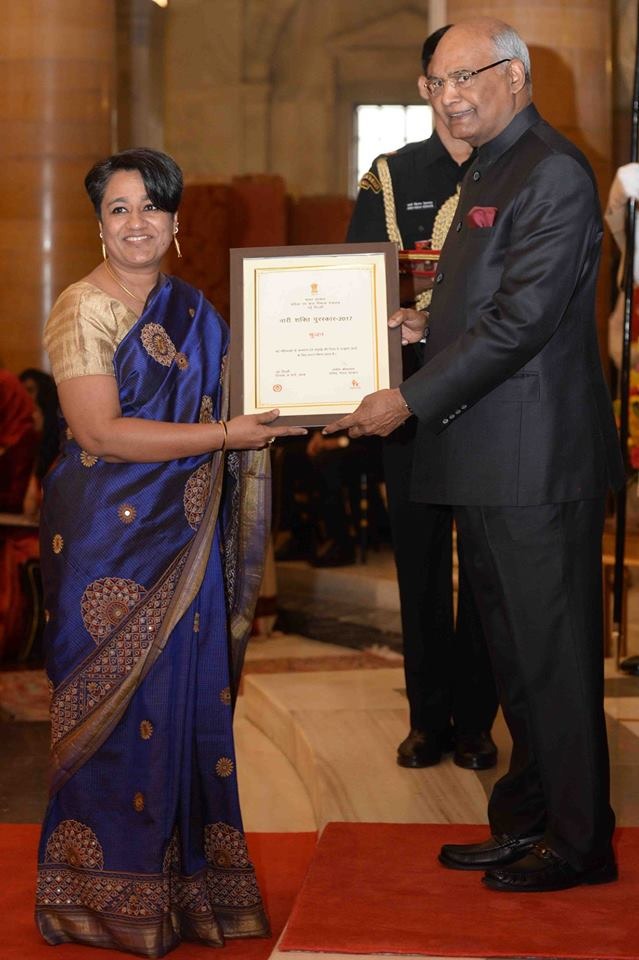
March 2020. The COVID-19 pandemic.
Shrujan launches the Count on Me Voucher Scheme with an urgent appeal to customers to purchase these Vouchers and redeem them against Shrujan products bought over the course of two years.
The overwhelming support from our customers ensures that work is provided to our craftswomen and salaries paid to our staff, through all the months of the pandemic. We will always be grateful to our customers for their instant and generous help and support.
The interstate travel lockdown also meant that fabric could not be sourced from other states of India as was the usual practice. Shrujan overcomes this hurdle by deepening its relationships with Kutch-based craft communities. Local weavers and hand block printers produce Shrujan-quality fabric thus ensuring that there is no break in production.
The first shop of the Kutch Craft Collective opens in Kutch.
LLDC’s Inspiration Gallery presents a Show entitled Benares – A Brocade Story.
13 May. Kantisen Shroff -- Kaka as he is affectionately called -- passes away. Kaka was not only Chanda Shroff’s beloved husband but also her biggest ally and support.’
It was Kaka who coined the name Living and Learning Design Centre for Shrujan’s crafts education and resource centre in Ajrakhpur. A visionary and guiding light, Kaka’s shining example of what it is to be a good and useful human being inspires thousands to this day.
As part of the Design Centre of Wheels project, LLDC resumes its mobile museum visits. Several crafts including embroidery are showcased. Demonstrations and hands-on fun activities in five crafts are also part of the event.
LLDC’s Inspiration Gallery presents a Show entitled, Tanchoi which celebrates a traditional silk weaving technique.
2020 to 2021
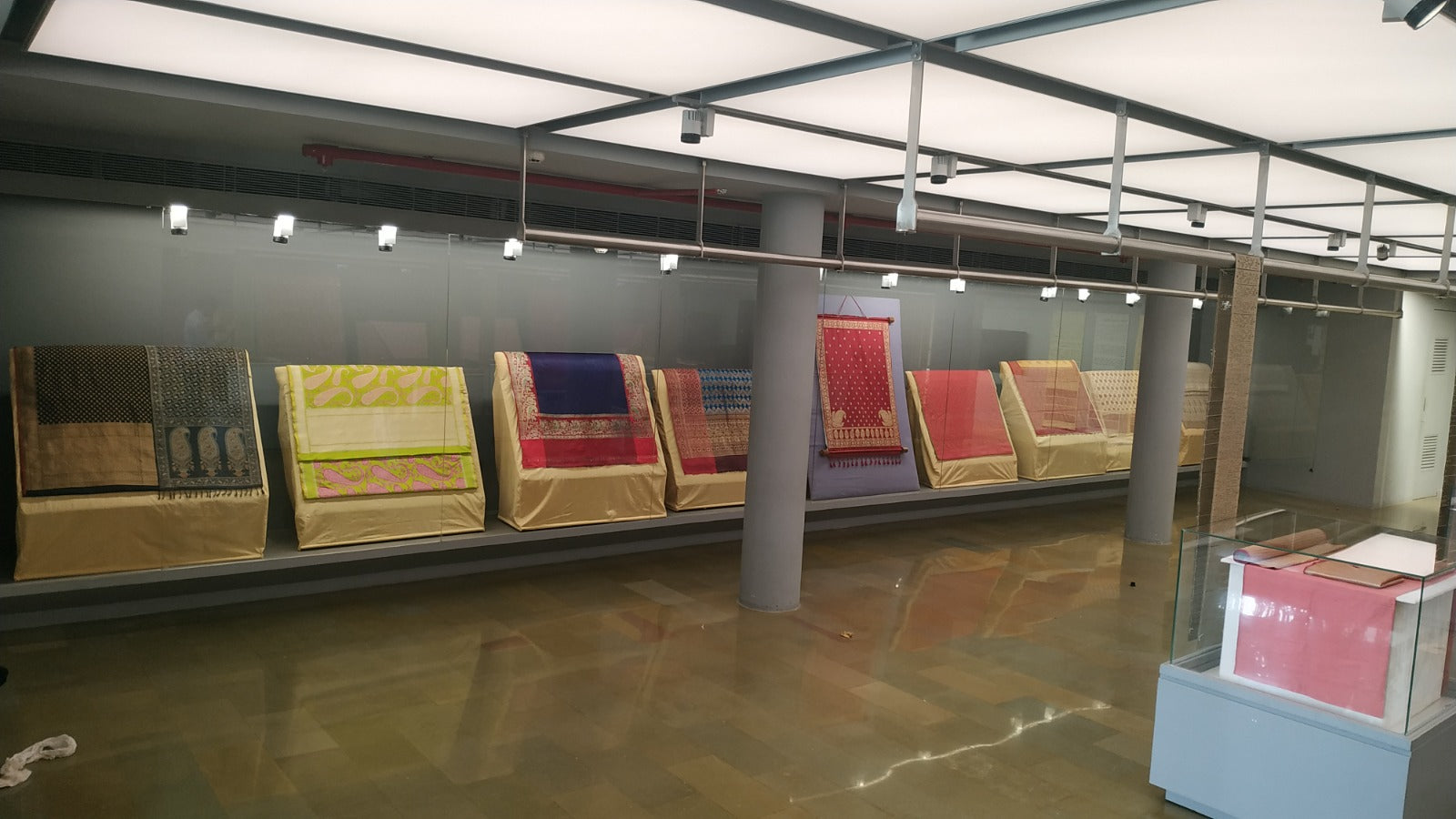
LLDC’s Inspiration Gallery presents a Show entitled, Of Braids & Magic. It showcases the creations of Erroll Pires Nelson, a master of the ply-split braiding technique.
LLDC’s Inspiration Gallery presents a Show entitled, Sindh and Kutch --connected via Embroideries?
LLDC inaugurates yet another Gallery and names it, Under the Embroidered Sky. Its first Show celebrates the embroideries of the Ahir community of Kutch.
LLDC’s Inspiration Gallery presents a Show entitled, Tradition and Innovation: The Journey in the craft of weaving of Vishram Valji and his Family.
For this year’s Folk Festival, now renamed as the Winter Festival, LLDC collaborates with Sahajeevan and the Centre for Pastoralism to present a Show entitled Living Lightly – Journeys with Pastoralists. More than 10,000 visitors enjoy this Show.
LLDC’s Inspiration Gallery presents Dastaan E Gul-Duzee: Embroideries of Afghanistan.
LLDC’s Inspiration Gallery hosts Mamadbhai Je Umbhre, Ajrakh: Family, Fabric and Fashion. This is a landmark event that highlights the traditional craft of Ajrakh and four generations of a family that practice it.
2022 to 2023

This year’s Winter Festival celebrates the arts, crafts, cuisine and culture of
the state of Madhya Pradesh. The performing arts and culture of Kutch are also celebrated with equal fanfare. More than 12,000 visitors enjoy this
five-day festival.
Shrujan is invited to participate in India Art Fair, 2024, New Delhi.
Tracing Patterns Foundation, Berkeley, USA, donates the Vickie Elson
Collection to LLDC. The Collection comprises 617 objects including a large number of hand embroidered textiles of Kutch.
Shrujan is invited to participate in Xtant, in Mallorca, Spain.
LLDC’s Inspiration Gallery inaugurates a new Show entitled Embroidered
Stories: One Stitch Many Names. The Show presents the story of a singular
stitch.
Shrujan inaugurates its Design Studio at its Bhujodi campus. The Studio is
spacious, nature-friendly and has work stations for hand weaving, pottery, discharge hand block printing and embroidery. There are also spaces where in-house and visiting designers can interact with craftspeople.
LLDC’s Under the Embroidered Sky Gallery inaugurates a Show entitled, The Embroideries of the Mutva community of Banni.
LLDC’s Museum Shop and Hands-On Experience Space are also inaugurated along with the Mutva Show.
2024
